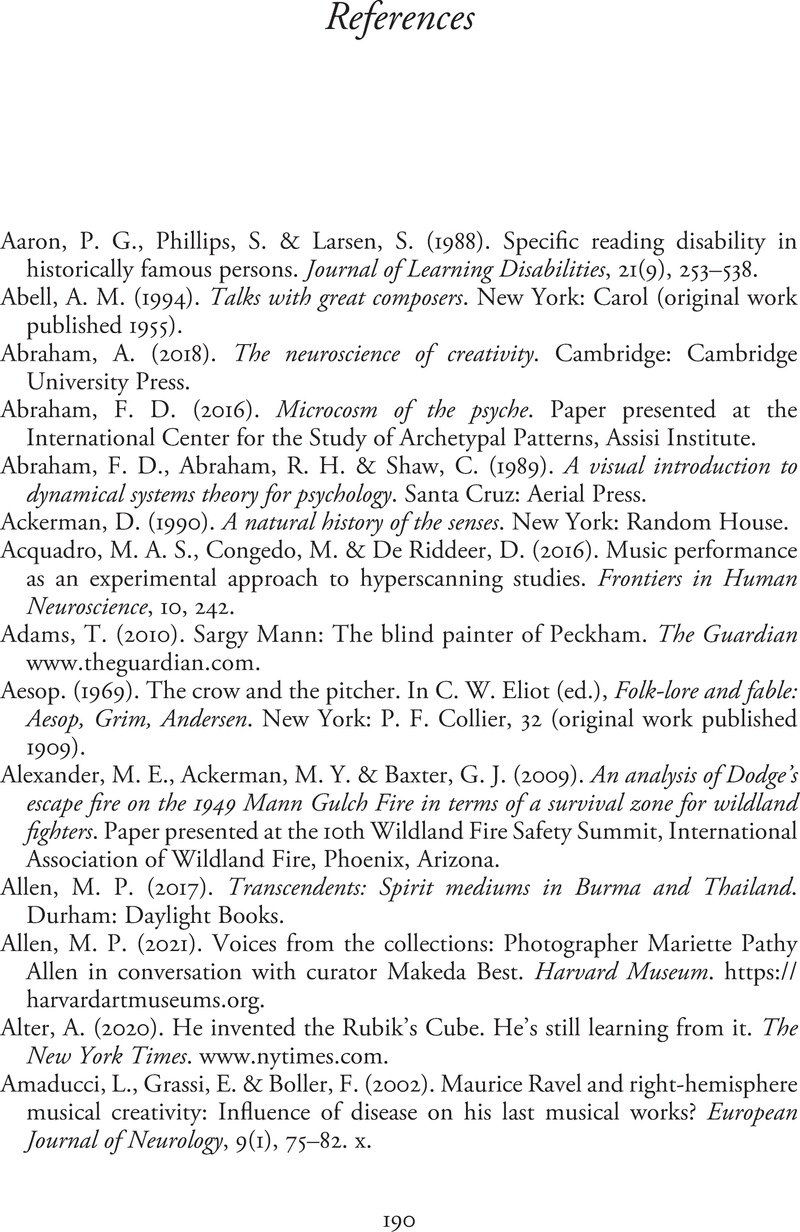Book contents
- The Creative Trance
- The Creative Trance
- Copyright page
- Dedication
- Contents
- Acknowledgments
- Introduction The Pervasive State of Trance
- Chapter 1 The Multifaceted Creative Trance
- Chapter 2 Consciousness and Creativity Theory in the Creative Trance
- Chapter 3 Unconscious Origins of the Creative Trance
- Chapter 4 Empathy and Dissociation in the Creative Trance
- Chapter 5 Evolution, Altered States, and the Creative Trance
- Chapter 6 The Creative Trance and the Brain
- Chapter 7 Dynamics of the Creative Trance
- Chapter 8 Dyslexia, Attention-Deficit Disorder, and the Creative Trance
- Chapter 9 Illness and Transformation in the Creative Trance
- Chapter 10 Different Abilities and the Creative Trance
- Chapter 11 Dementia and the Creative Trance
- Chapter 12 Altered States of a Lifesaving Creative Trance
- References
- Index
- References
References
Published online by Cambridge University Press: 02 June 2022
- The Creative Trance
- The Creative Trance
- Copyright page
- Dedication
- Contents
- Acknowledgments
- Introduction The Pervasive State of Trance
- Chapter 1 The Multifaceted Creative Trance
- Chapter 2 Consciousness and Creativity Theory in the Creative Trance
- Chapter 3 Unconscious Origins of the Creative Trance
- Chapter 4 Empathy and Dissociation in the Creative Trance
- Chapter 5 Evolution, Altered States, and the Creative Trance
- Chapter 6 The Creative Trance and the Brain
- Chapter 7 Dynamics of the Creative Trance
- Chapter 8 Dyslexia, Attention-Deficit Disorder, and the Creative Trance
- Chapter 9 Illness and Transformation in the Creative Trance
- Chapter 10 Different Abilities and the Creative Trance
- Chapter 11 Dementia and the Creative Trance
- Chapter 12 Altered States of a Lifesaving Creative Trance
- References
- Index
- References
Summary

- Type
- Chapter
- Information
- The Creative TranceAltered States of Consciousness and the Creative Process, pp. 190 - 230Publisher: Cambridge University PressPrint publication year: 2022

